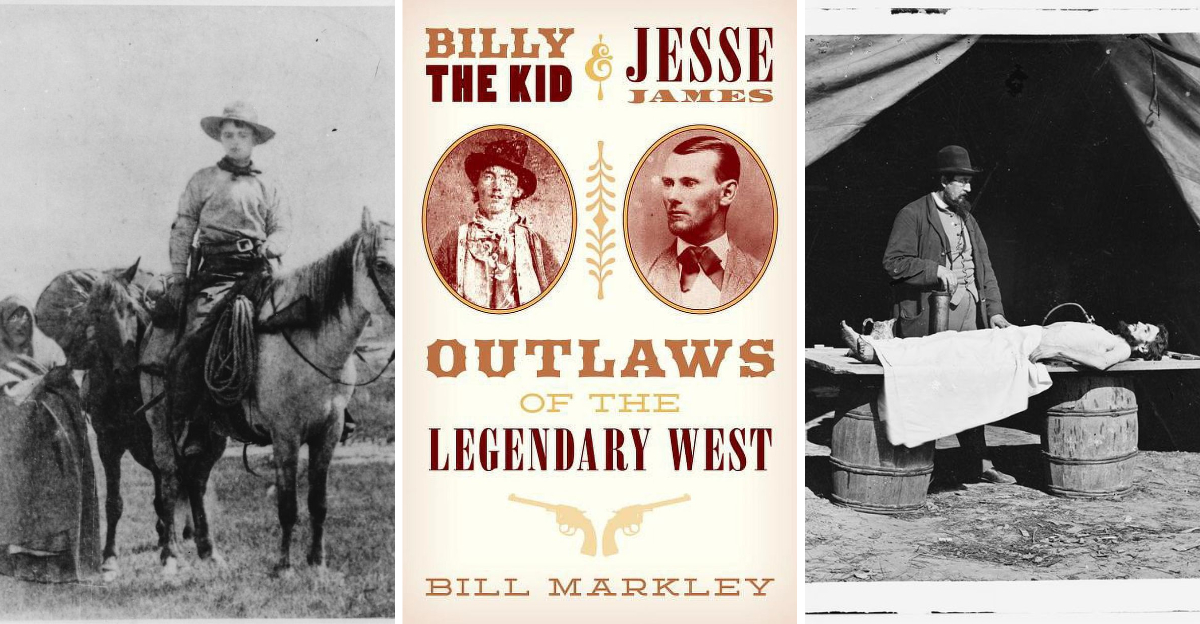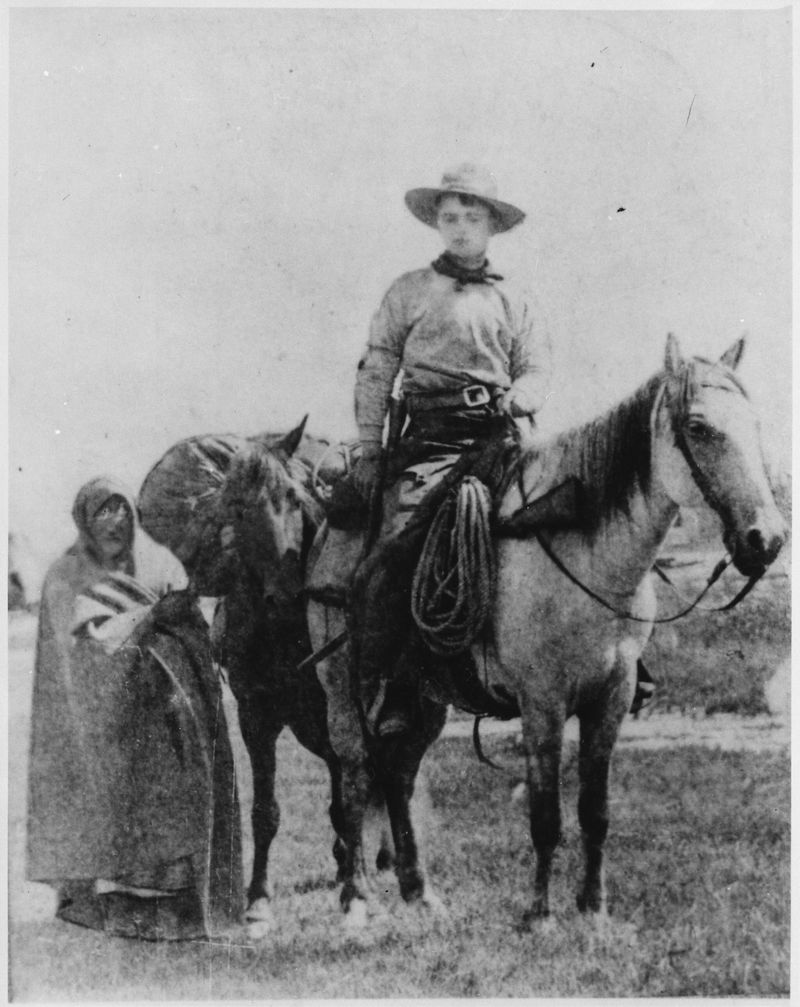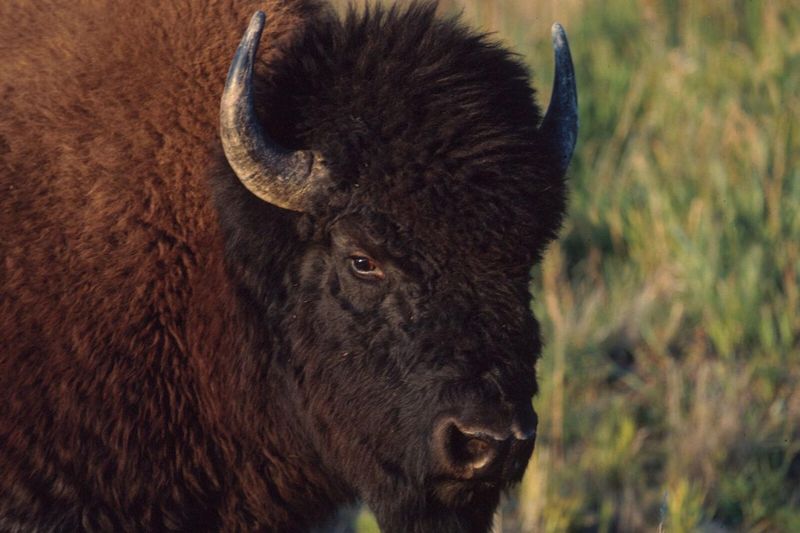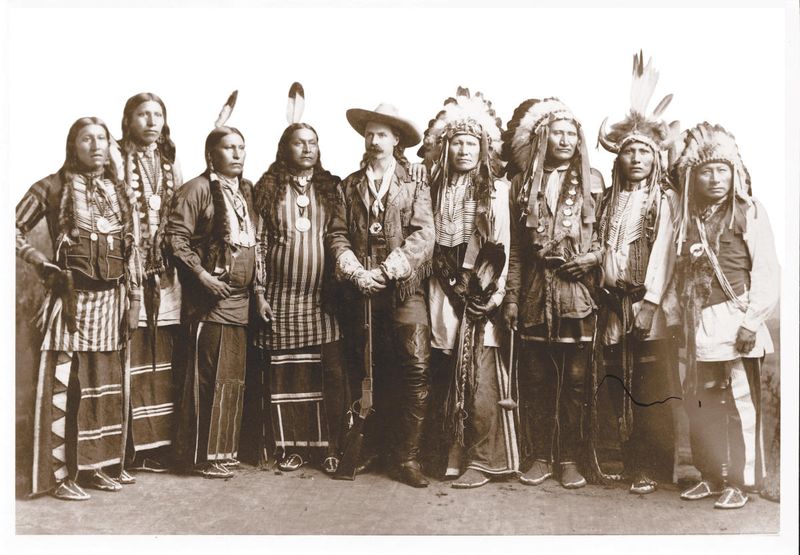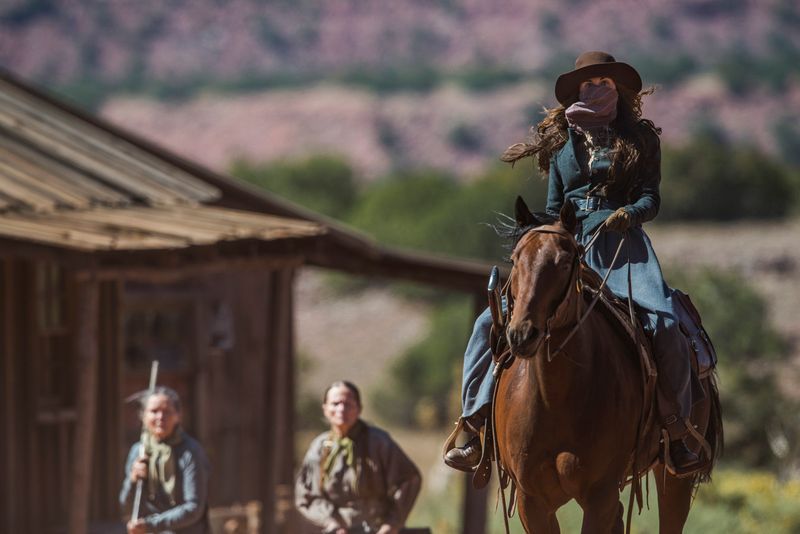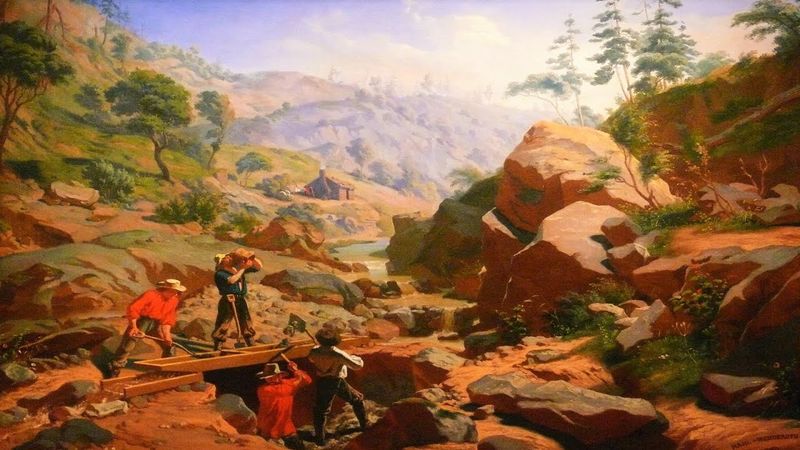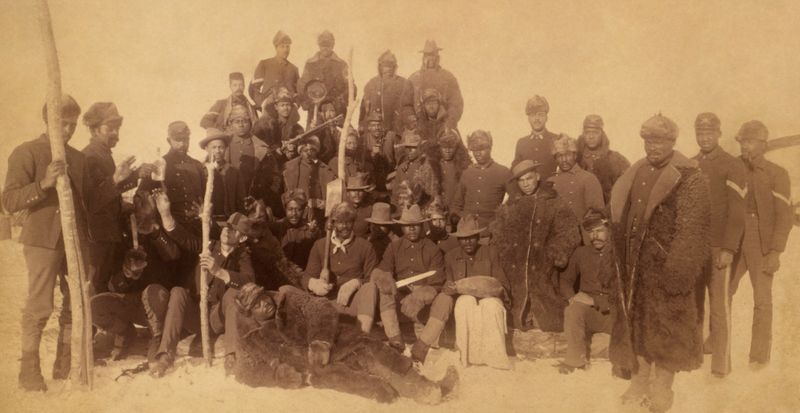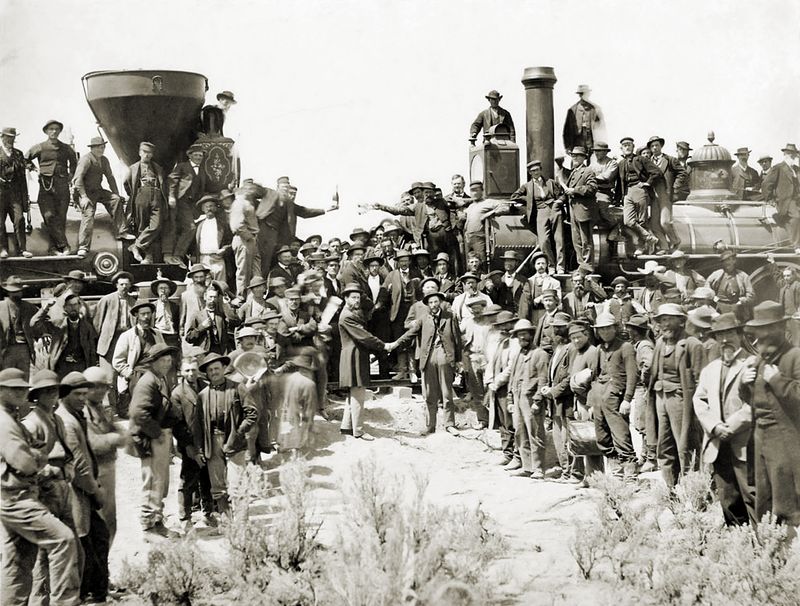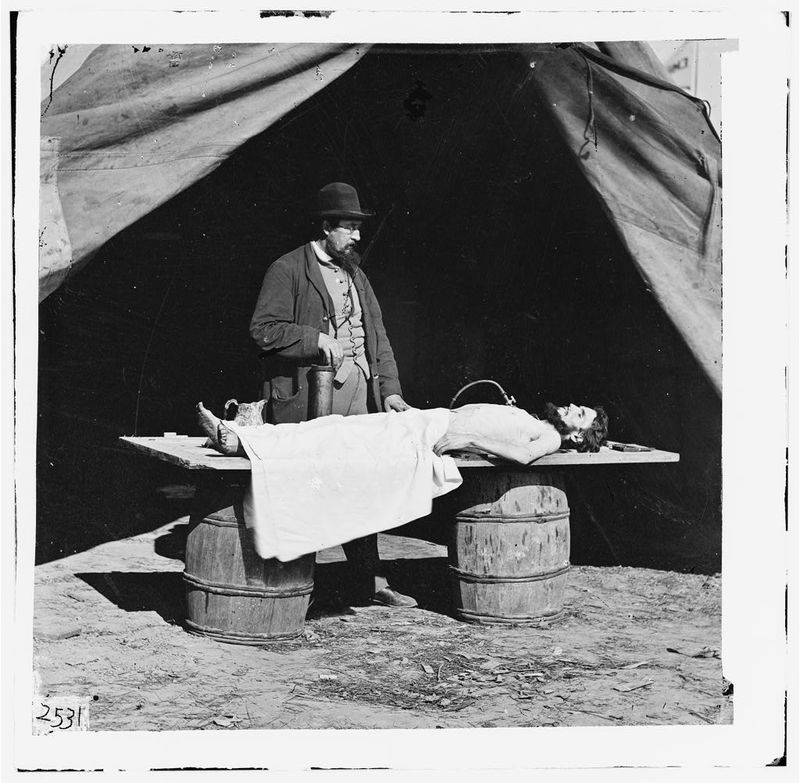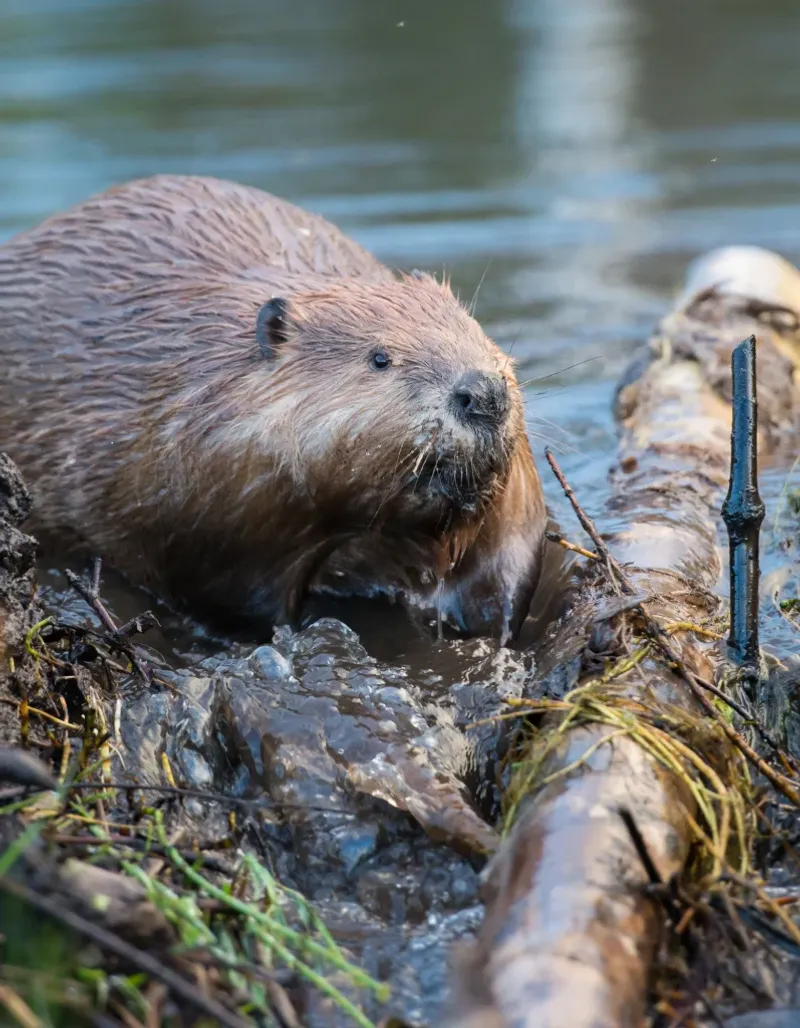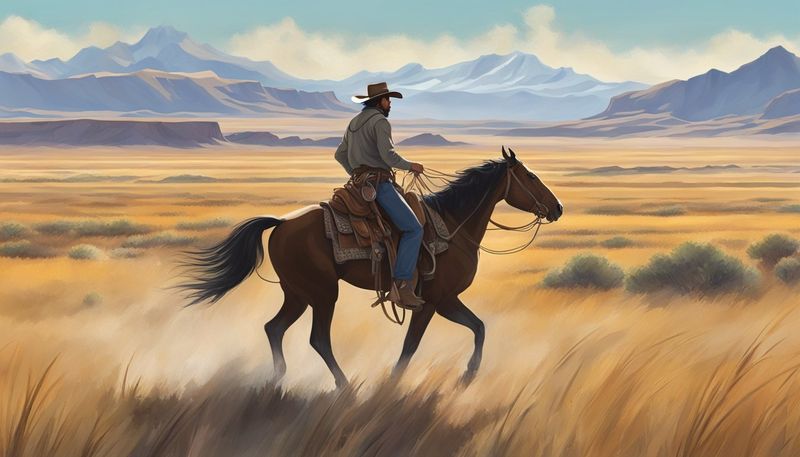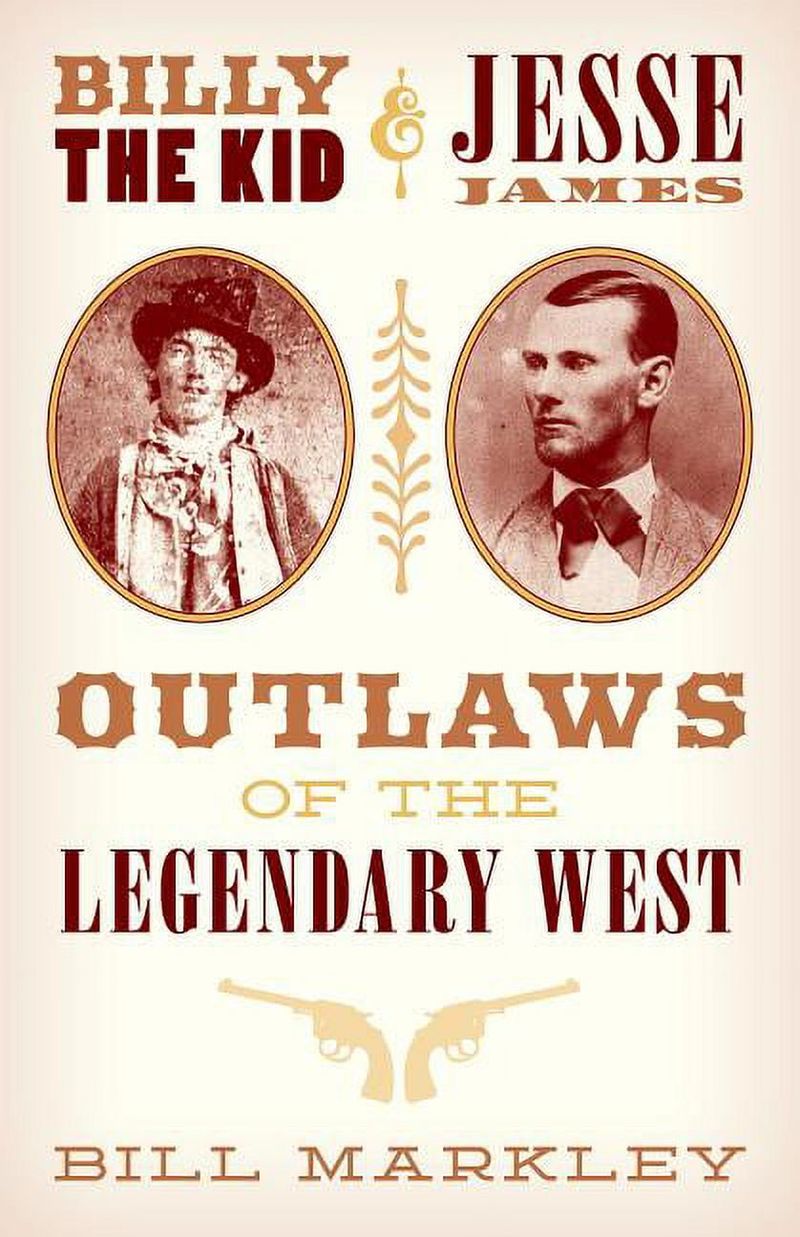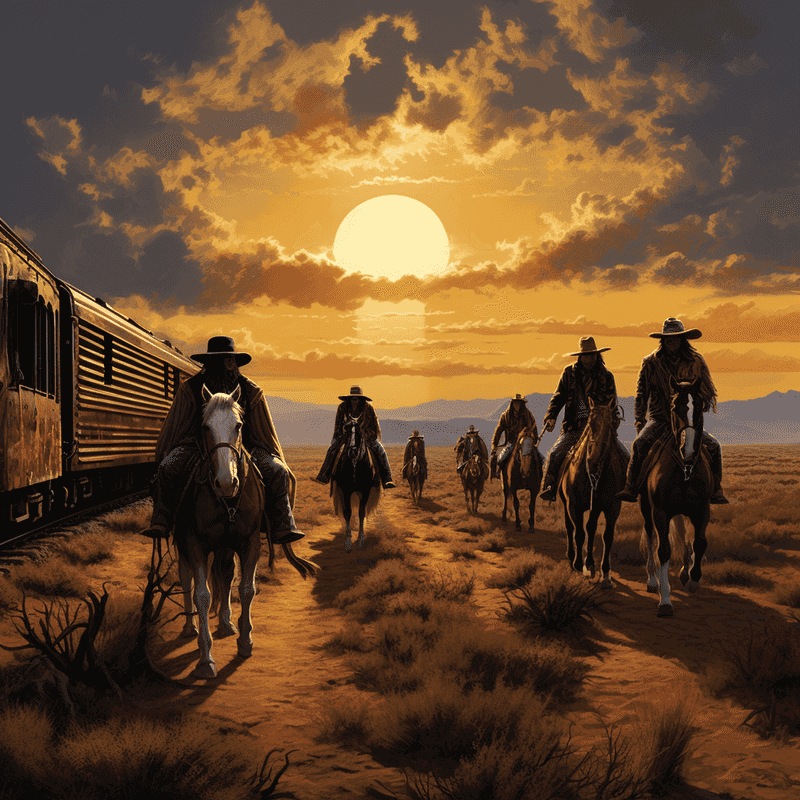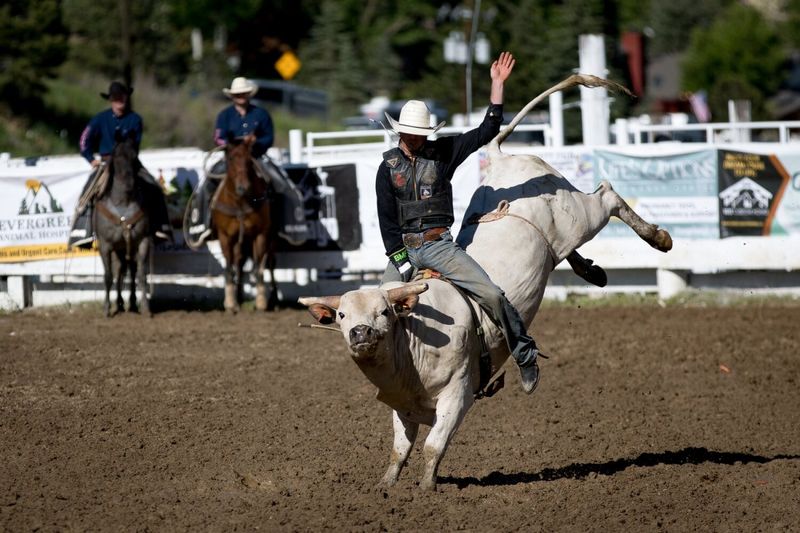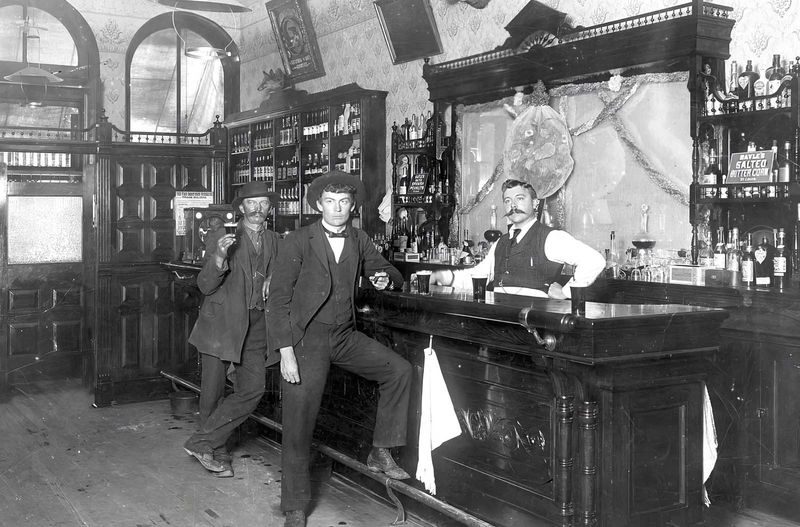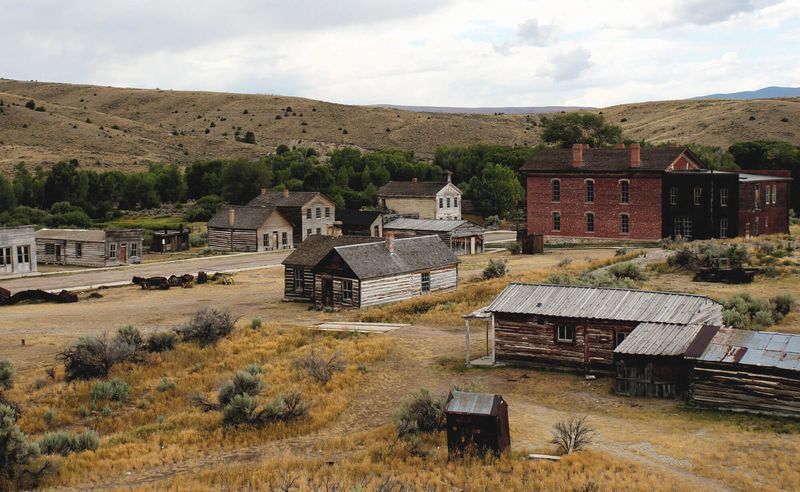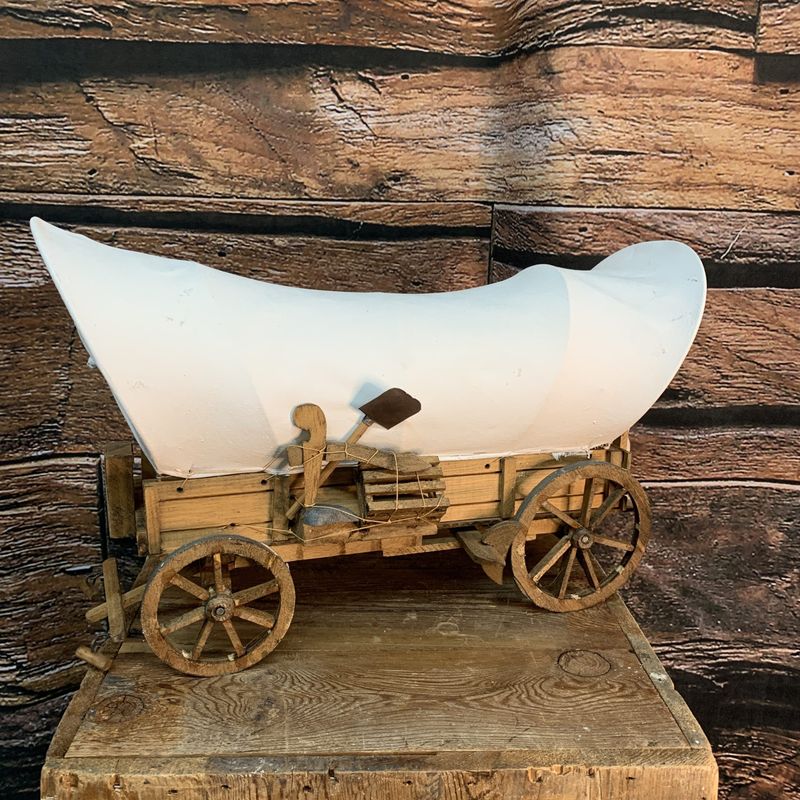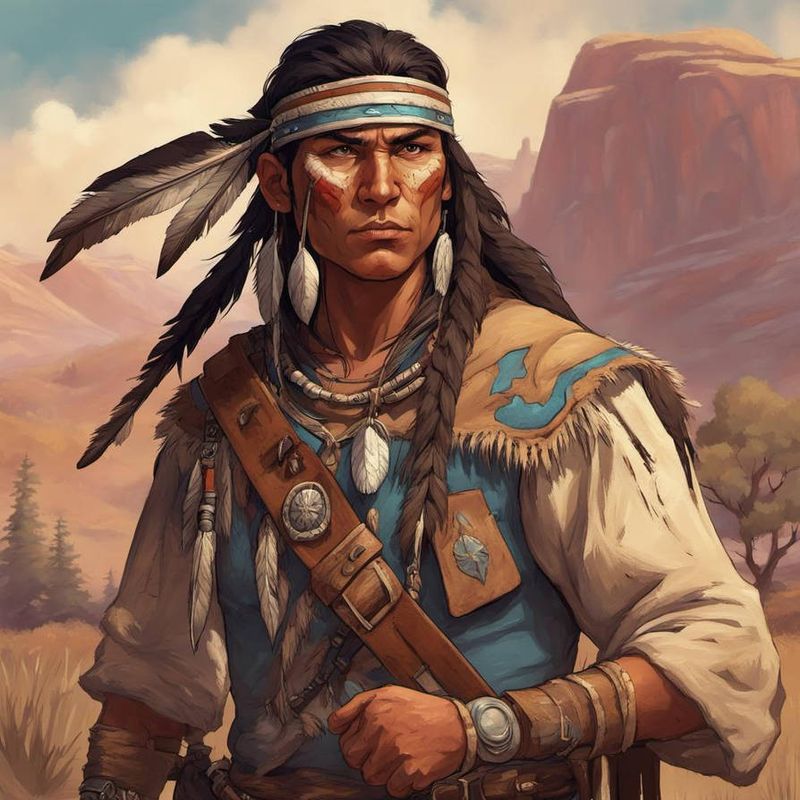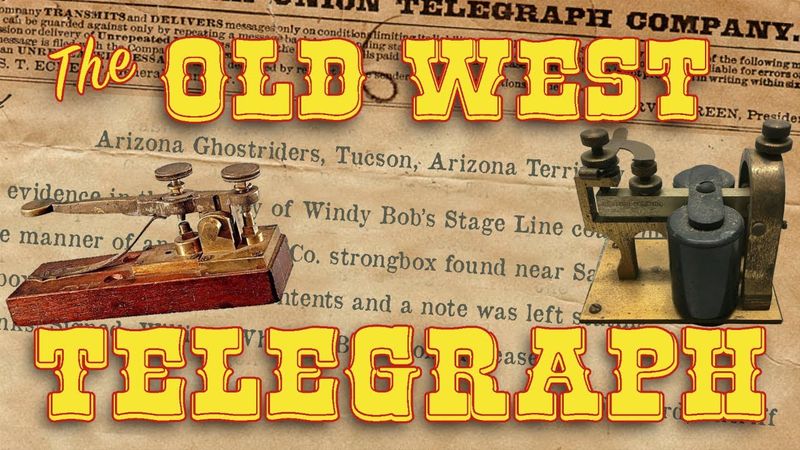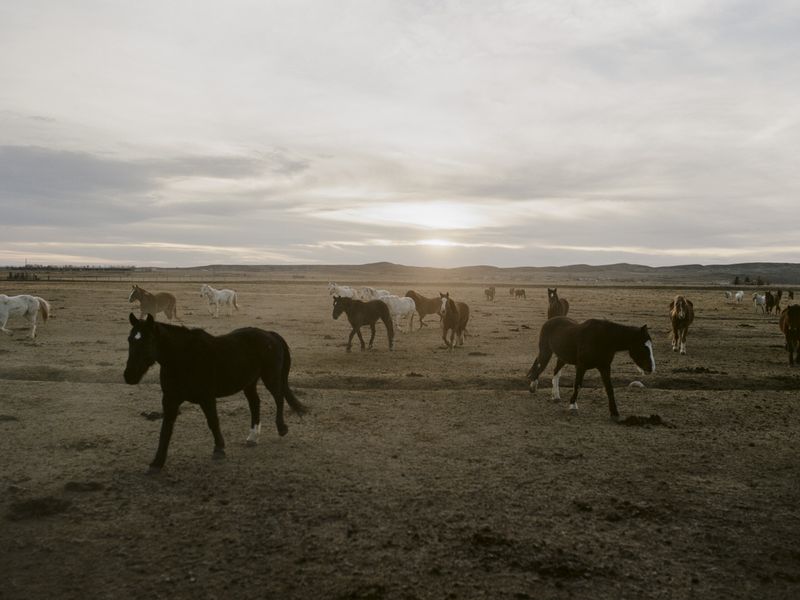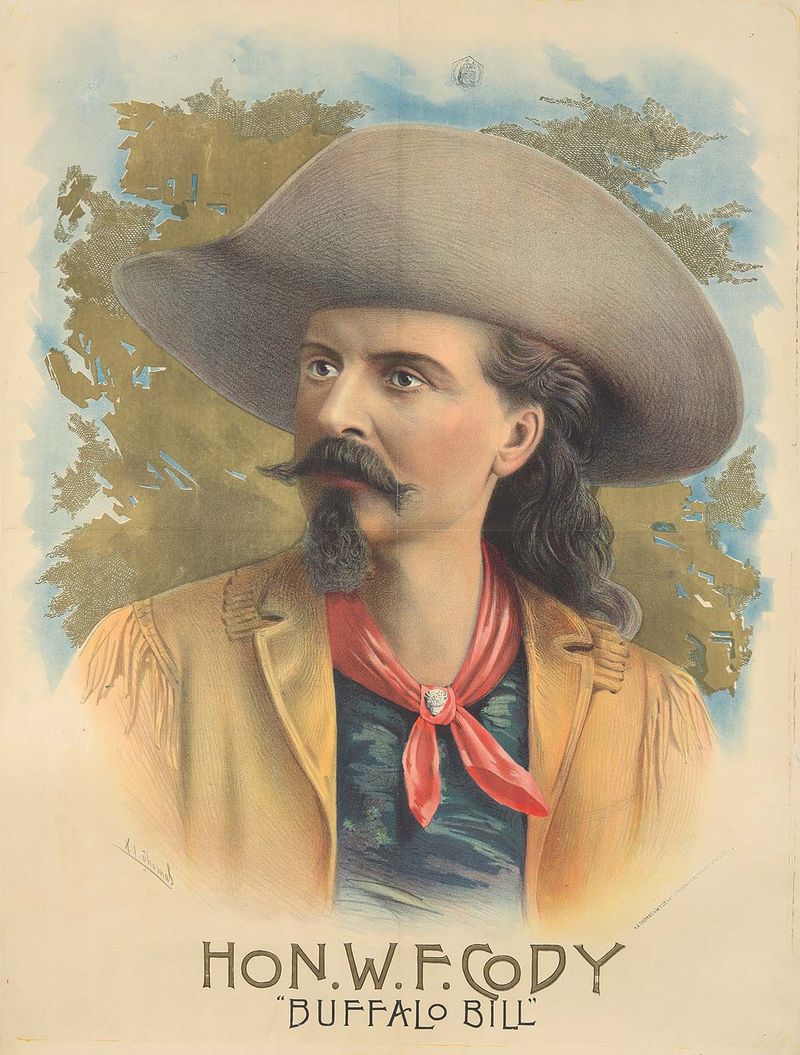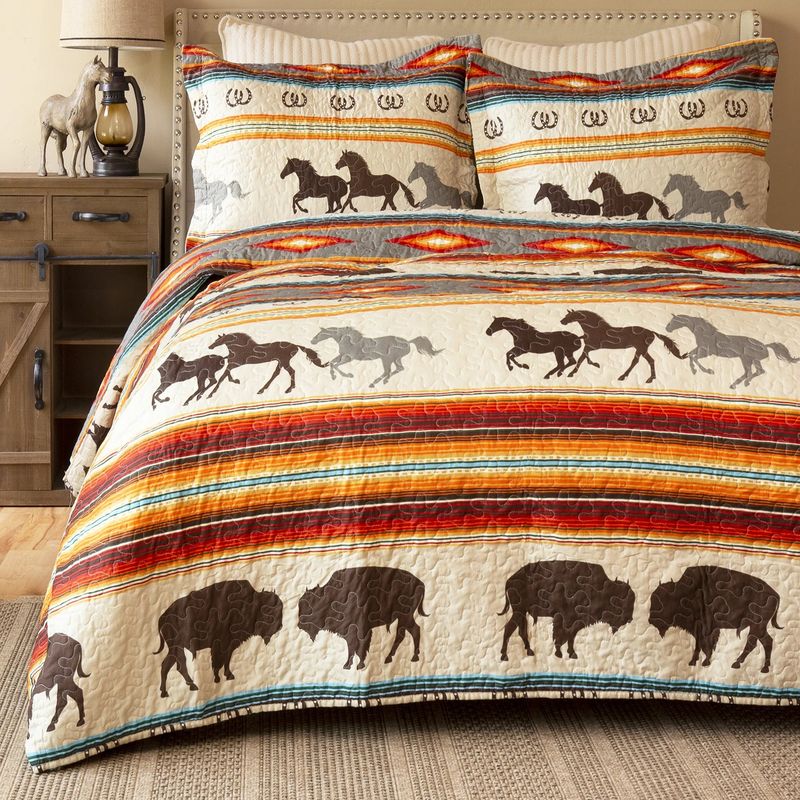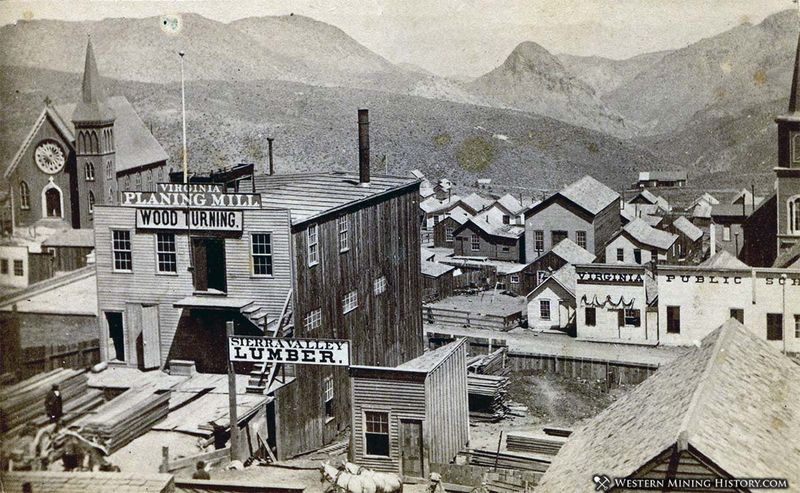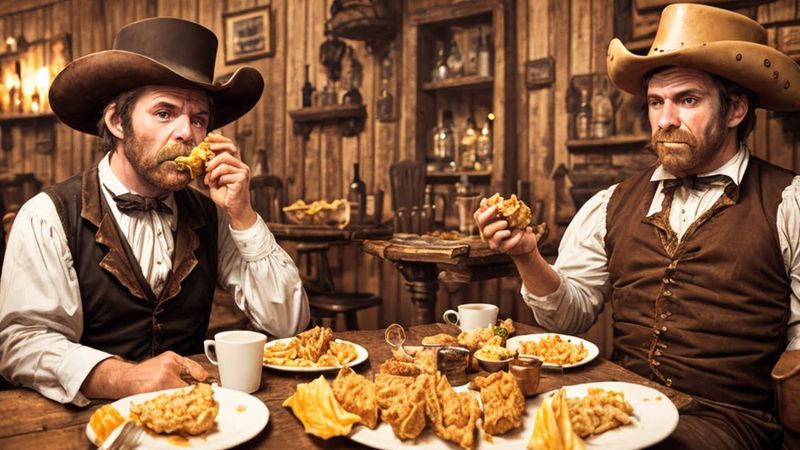The Wild West era is often depicted as a time of gunfights, cowboys, and outlaws, but there’s much more beneath the surface.
From the unsung heroes who braved the wilderness to the role of nature in settlers’ survival, these fascinating facts unveil the hidden truths of a time long past.
Discover the diverse groups who thrived in the untamed landscapes, and uncover stories that history books often overlook.
This blog post delves into 25 intriguing aspects of the Wild West that add depth and color to our understanding of this iconic era.
1. Mail Carriers Who Faced The Wilderness’s Dangers
Mail carriers of the Wild West were the unsung heroes, braving the vast, untamed wilderness to deliver letters and parcels. Their journeys were fraught with danger, navigating treacherous terrains and facing the threat of bandits and hostile weather.
These hardy individuals embodied resilience and determination, often traveling alone for miles on horseback. Their courage ensured that communication between distant settlements was maintained, a crucial lifeline for frontier communities.
The Pony Express, though short-lived, became legendary for its speed and efficiency, symbolizing the fearless spirit of these mail carriers.
2. The Bison’s Secret Role In Settler Survival
Bison played a pivotal role in the survival of settlers on the American frontier. These majestic creatures provided essential resources such as meat, hides, and bones, which were utilized for food, clothing, and tools.
The relationship between settlers and bison was symbiotic, as the availability of these animals often determined the viability of a settlement. Despite their importance, bison were hunted nearly to extinction, profoundly impacting both the ecosystem and the livelihoods of indigenous peoples.
The bison’s secret role highlights the intricate balance between humans and nature in the Wild West.
3. Diverse Groups Who Called The Wilds Home
The Wild West was home to a diverse array of peoples, each contributing to the rich tapestry of frontier life. Native Americans, African Americans, and European immigrants all played significant roles in shaping the region’s history and culture.
These groups faced distinct challenges and opportunities, forging alliances and sometimes conflicts. Their varied traditions, skills, and perspectives enriched the social and economic landscape of the Wild West.
Understanding this diversity provides a more nuanced view of frontier history, acknowledging the contributions and struggles of all who called the wilds home.
4. Unsung Heroes of the Frontier: Women Pioneers
Women pioneers were the backbone of frontier communities, often working alongside men to build new lives in harsh conditions. They were not merely homemakers but active participants in farming, trading, and defending their homes.
Their resilience and adaptability were crucial in overcoming the challenges of frontier life, from harsh weather to isolation. Many women also became community leaders, advocating for education and healthcare.
These unsung heroes left a lasting legacy, inspiring future generations with their determination and courage in the face of adversity.
5. The Gold Rush’s Hidden Costs
The Gold Rush brought wealth and opportunity but also had hidden costs that are often overlooked. The influx of prospectors led to environmental degradation, with rivers polluted and landscapes scarred by mining activities.
The social impact was profound, as indigenous communities were displaced, and lawlessness often prevailed in boomtowns. Despite the promise of fortune, many miners faced hardship and disappointment.
Uncovering these hidden costs reveals the complex legacy of the Gold Rush, highlighting the need to balance economic pursuits with social and environmental responsibilities.
6. Buffalo Soldiers: Fighting for Freedom and Equality
Buffalo Soldiers were African American regiments in the U.S. Army, tasked with maintaining order in the Wild West. Despite facing racism and discrimination, they served with distinction, protecting settlers and building infrastructure.
Their contributions went beyond military service, as they also helped map uncharted territories and establish vital communication lines. These soldiers became symbols of courage and perseverance, fighting for freedom and equality.
The legacy of Buffalo Soldiers is a testament to their enduring spirit and the integral role they played in shaping the American frontier.
7. Railroads: Taming the Wild West
The arrival of railroads transformed the Wild West, linking isolated communities and facilitating trade and travel. These iron horses conquered vast distances, bringing goods, people, and ideas to the frontier.
The construction of railroads was a monumental task, requiring ingenuity, labor, and often ruthless business practices. While they spurred economic growth and settlement, they also led to the displacement of indigenous peoples and altered the natural landscape.
Railroads were both a symbol of progress and a catalyst for change, marking the dawn of a new era in the Wild West.
8. Frontier Medicine: Innovations and Challenges
Frontier medicine was a blend of innovation and challenge, as doctors and healers worked with limited resources and knowledge. They faced epidemics, injuries, and the unpredictable nature of life on the frontier.
Despite these hurdles, many medical practitioners pioneered new techniques and treatments, contributing to the advancement of healthcare. Women and indigenous healers also played vital roles, using traditional remedies and wisdom.
The story of frontier medicine is one of resilience and ingenuity, reflecting the challenges and triumphs of those who cared for their communities.
9. The Wild West’s Unexpected Architects: Beavers
Beavers were the unexpected architects of the Wild West, shaping the landscape with their intricate dam-building activities. These industrious creatures created wetland ecosystems that supported a diverse array of flora and fauna.
Their natural engineering influenced settlement patterns, as beaver ponds provided water resources and fertile land for farming. Trappers sought beaver pelts, leading to economic opportunities and conflicts with indigenous peoples.
Understanding the role of beavers adds depth to the environmental and economic history of the frontier, highlighting nature’s influence on human development.
10. The Myth of the Lone Cowboy
The image of the lone cowboy roaming the Wild West is a powerful myth, often romanticized in popular culture. In reality, cowboys were part of a larger community, working in teams to drive cattle and manage ranches.
Their lives were demanding and required cooperation and skill, far from the solitary existence often portrayed. Cowboys came from diverse backgrounds, including African Americans, Mexicans, and Native Americans.
Debunking the myth of the lone cowboy offers a more realistic view of frontier life, emphasizing the importance of teamwork and diversity in shaping the West.
11. Outlaws and Their Code of Honor
Outlaws of the Wild West, often romanticized as rebellious figures, operated under a unique code of honor. While lawless, many adhered to unwritten rules, such as loyalty to their gang and protection of women and children.
Their notoriety brought fame, but their lives were marked by violence and constant pursuit by lawmen. Outlaws like Jesse James and Billy the Kid became legends, their stories blending fact and fiction.
Exploring the code of honor among outlaws reveals the complexities of their lives and the moral ambiguity of frontier justice.
12. The Wild West’s Cultural Melting Pot
The Wild West was a cultural melting pot, where diverse groups converged, bringing together unique traditions and practices. Native Americans, Mexicans, European immigrants, and others contributed to a rich cultural tapestry.
Frontier towns became hubs of cultural exchange, where music, food, and customs were shared and adapted. This blending of cultures enriched the social fabric of the West, fostering innovation and cooperation.
Acknowledging the Wild West as a cultural melting pot enhances our understanding of its history, celebrating the diversity that shaped its unique identity.
13. The Role of Wild West Rodeos
Wild West rodeos were more than just entertainment; they were a celebration of cowboy culture and skill. Rodeos showcased the talents of cowboys in events like bronco riding, roping, and bull riding.
These competitions fostered camaraderie and rivalry, drawing crowds from far and wide. Rodeos also served as social gatherings, where communities came together to share experiences and stories.
The role of rodeos in the Wild West is a testament to the enduring spirit of the cowboy, preserving traditions and fostering a sense of community.
14. The Frontier’s Unlikely Entrepreneurs: Saloon Owners
Saloon owners were unlikely entrepreneurs in the Wild West, providing entertainment and social hubs for frontier communities. These establishments offered more than just drinks; they hosted poker games, dances, and served as informal meeting places.
Saloon owners capitalized on the transient nature of frontier life, catering to miners, cowboys, and travelers seeking respite. Despite their often-rowdy reputation, saloons were integral to the social and economic fabric of the West.
Exploring the role of saloon owners illuminates the entrepreneurial spirit that thrived amidst the challenges of frontier life.
15. The Ghost Towns of the Wild West
Ghost towns are haunting reminders of the Wild West’s boom-and-bust cycles. These abandoned settlements once thrived during mining booms but were deserted when resources were depleted.
The remnants of these towns tell stories of ambition, hope, and eventual decline. Exploring ghost towns offers a glimpse into the transient nature of frontier life, where fortunes could change overnight.
The ghost towns of the Wild West serve as historical landmarks, preserving the legacy of those who sought new beginnings in a rapidly changing world.
16. Farming Innovations in the Arid West
Farming in the arid landscapes of the Wild West required ingenuity and innovation. Pioneers developed techniques such as dry farming and irrigation to make the land productive.
These agricultural practices were essential for sustaining communities, providing food and resources in challenging environments. Farmers often collaborated, sharing knowledge and tools to overcome the harsh conditions.
The story of farming innovations highlights the determination and creativity of those who transformed the arid West into fertile ground, laying the foundation for future generations.
17. The Unsung Role of Native Scouts
Native scouts played an unsung but crucial role in the Wild West, guiding settlers through unfamiliar and often hostile landscapes. Their deep knowledge of the land and ability to navigate its challenges were invaluable.
These scouts served as intermediaries between settlers and indigenous communities, helping to forge alliances and avert conflicts. Despite their contributions, they often faced mistrust and marginalization.
Recognizing the role of Native scouts enriches our understanding of frontier history, honoring their contributions to the exploration and settlement of the West.
18. The Telegraph’s Impact on Communication
The telegraph revolutionized communication in the Wild West, enabling rapid transmission of information across vast distances. Telegraph lines connected isolated communities, facilitating commerce, governance, and personal communication.
This breakthrough technology transformed the frontier, shrinking the perception of distance and time. It played a vital role in coordinating efforts during conflicts and in relaying news across the nation.
The impact of the telegraph on communication underscores its importance in shaping the social and economic landscape of the Wild West.
19. The Wild West’s Hidden Environmental Challenges
The Wild West faced environmental challenges often overshadowed by its rugged allure. Deforestation, overgrazing, and water pollution were significant issues, driven by rapid expansion and resource extraction.
These challenges impacted both the natural ecosystem and the communities that relied on its resources. Efforts to address these issues were often hampered by lack of awareness and conflicting economic interests.
Exploring these hidden environmental challenges reveals the complexities of balancing development with sustainability in the frontier era.
20. The Frontier’s Artistic Expressions
Artistic expression flourished in the Wild West, capturing the rugged beauty and dynamic life of the frontier. Artists traveled to remote areas, depicting landscapes, wildlife, and the diverse peoples who inhabited the region.
Their works provided a visual record of a rapidly changing world, influencing perceptions and inspiring exploration. Art became a bridge between the untamed wilderness and the growing nation.
The artistic expressions of the Wild West continue to resonate, offering a window into the era’s spirit and the timeless allure of its landscapes.
21. The Secret Language of Frontier Quilts
Quilts in the Wild West were more than just practical items; they were a form of artistic expression and communication. Patterns and symbols in quilts often conveyed personal stories, cultural heritage, and community ties.
Quilts served as family heirlooms, passed down through generations, preserving memories and traditions. They also provided warmth and comfort in the harsh frontier environment.
The secret language of frontier quilts reveals the creativity and resilience of those who crafted them, weaving together art, history, and identity.
22. The Rise and Fall of Mining Towns
Mining towns sprang up quickly during the gold and silver rushes, attracting prospectors and fortune-seekers. These settlements thrived on the promise of wealth but often faced rapid decline when resources were exhausted.
The rise and fall of mining towns reflects the boom-and-bust nature of frontier economies, where fortunes were made and lost. Despite their transient existence, these towns left lasting cultural and historical legacies.
Exploring these towns’ stories offers insight into the aspirations and challenges of those who sought their fortunes in the Wild West.
23. The Wild West’s Culinary Delights
Culinary delights in the Wild West reflected the region’s diverse cultural influences and resourcefulness. Settlers, indigenous peoples, and immigrants brought their own flavors and techniques, creating a unique frontier cuisine.
Meals were often prepared with locally available ingredients, combining traditional recipes with new adaptations. This fusion of culinary styles enriched the gastronomic landscape of the West.
The Wild West’s culinary delights celebrate the creativity and adaptability of its people, offering a taste of history that continues to influence modern American cuisine.
24. Settlers’ Spiritual Practices and Beliefs
Spiritual practices and beliefs in the Wild West were as diverse as its inhabitants. Settlers brought their religious traditions, while indigenous peoples maintained their spiritual customs.
This diversity led to a rich tapestry of spiritual life, where different beliefs coexisted, sometimes blending into new practices. Spiritual gatherings were opportunities for community bonding and reflection, providing solace and guidance.
Exploring the spiritual practices of the Wild West reveals the depth of faith and cultural exchange that characterized life on the frontier.
25. The Legacy of Wild West Lawmen
Lawmen of the Wild West, such as sheriffs and marshals, played a crucial role in maintaining order in a lawless land. They faced formidable challenges, enforcing justice in towns where crime and violence were rampant.
These lawmen were often larger-than-life figures, their exploits becoming the stuff of legend. Their legacy is one of courage, dedication, and the ongoing struggle to uphold the rule of law in the untamed frontier.
The stories of Wild West lawmen continue to captivate, illustrating the complexities of justice and morality in a turbulent era.
